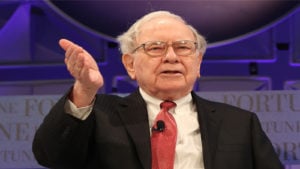In investing, as in life, a lot can change in ten years. As a result it can be tricky to predict what stocks to sell as certain sectors become less popular. An investor need only look backward to see how true that is.
At the moment the six most valuable companies in the world are all tech companies: Apple (NASDAQ:AAPL), Amazon.com (NASDAQ:AMZN), Microsoft (NASDAQ:MSFT), Alphabet (NASDAQ:GOOG,NASDAQ:GOOGL), Alibaba (NYSE:BABA), and Facebook (NASDAQ:FB). That was not the case at the beginning of 2011.
Back then, the most valuable company in the world (by market capitalization) was energy giant Exxon Mobil (NYSE:XOM), with Apple coming in second. Walmart (NYSE:WMT) was fourth. Apple would pass Exxon later that year, but as late as January 2013 Exxon was back on top.
Exxon now is no longer in the top 50. Since Jan. 1, 2011, Apple stock has returned almost 900%. XOM stock has lost more than half its value. Zoom Video Communications (NASDAQ:ZM) wasn’t founded until April 2011 — and now has a higher market cap than Exxon Mobil.
Neither the rise in tech nor the collapse of crude would have seemed stunning to an investor as the 2010s dawned. Guaranteed? No. Possible? Certainly.
And so the market of the last decade provides a lesson for the next ten years: investing for the next decade is about looking forward, not backwards. The popular stocks of today could be stocks to sell tomorrow.
In that spirit, here are eight stocks and sectors that might not see the same pressure as integrated oil and gas names like Exxon, but could look very different in 2030 — and not for the better:
- Coca-Cola (NYSE:KO)
- Advertising agencies
- Altria (NYSE:MO) and Philip Morris International (NYSE:PM)
- Off-price retail
- Private equity
- Recreational vehicle manufacturers and retailers
- Berkshire Hathaway (NYSE:BRK.A,NYSE:BRK.B)
- iGaming and online sports betting
Coca-Cola

I’ll admit: KO has performed better than I expected. Coke stock has underperformed the S&P 500 over the last decade, even including dividends. But ten-year total returns of 118% represent annualized gains just over 8%. That’s an attractive return for a relatively safe, defensive, play.
But at some point, a changing world seems likely to pressure Coca-Cola’s revenue and earnings. To some extent, it already has. Plunging diet soda consumption, in particular, has been a problem for both Coke and rival Pepsi (NASDAQ:PEP). Coca-Cola’s earnings per share, even before the novel coronavirus pandemic, had been flat (pardon the pun) for essentially this entire decade.
Elsewhere in the portfolio, Coca-Cola has responded to obesity concerns by pushing smaller sizes and pivoting into categories like sparkling water. A “refranchising” effort has moved the company out of bottling in an effort to improve profit margins.
But refranchising has played out at this point. As more consumers switch to healthier drink options, high-sugar sodas will push KO into the group of stocks to sell. And Coke hasn’t been all that successful outside of soda. The acquisition of Topo Chico looks interesting, and Coke is moving that brand into hard seltzer. Still, a $220 million acquisition seems unlikely to move the needle for a company worth nearly 1,000x as much.
This remains a company whose revenue and profits rest heavily on soda. And that seems like a problem as more and more consumers move away from the product. Parents are far less likely to allow their children to drink soda at all. Obesity problems in the U.S. and elsewhere show no signs of abating, and a company that contributes to those problems is likely to face pressure at some point. Come 2030, Coca-Cola may well be a company whose best days are firmly behind it.
Advertising Agencies

In the eyes of Wall Street, ad agencies already have lost some of their sheen. The three big publicly-traded companies have struggled over the past decade. The Interpublic Group of Companies (NYSE:IPG) has returned a solid 75%, though even that figure lags the market. Omnicom Group (NYSE:OPC) has gained just 10%, while WPP plc (NYSE:WPP) has actually declined. None of the three stocks is priced for growth: IPG is the most expensive yet trades at just 10.4x the consensus estimate for 2021 earnings.
Weak 2020 performance — on average, the three stocks to sell have lost one-third of their value — obviously is a factor. But 2020 weakness isn’t just about the short-term hit to revenue. The pandemic is likely to accelerate the shift to digital advertising, programmatic in particular. It’s not a coincidence that The Trade Desk (NASDAQ:TTD) has more than doubled while ad agency stocks have fallen sharply.
There’s little reason to see a reversal of the 2020 trend. Targeted advertisements with the aid of algorithms and ‘Big Data’ will be more effective than broad, expensively-tailored campaigns. From a wider standpoint, any high-tough, labor-intensive business is likely to struggle as computing power increases.
This is an industry that already is showing signs of being disintermediated. Come 2030, it may well be an industry on its last legs.
Altria and Philip Morris

Tobacco stocks, too, already are heading in the wrong direction. Just a few years ago, MO stock was considered the most successful in history. It has now declined 43% in three years. A 9% dividend yield seems at risk of being cut.
But the industry may be in far worse shape a decade from now. Cigarette usage continues to decline, strengthening the case for tobacco stocks to sell. Philip Morris International has benefited from growth in some developing markets, health concerns are likely to increase.
Meanwhile, the vaping trend seems to have peaked. Altria’s IQOS “tobacco heating system” hasn’t really caught on. Most investors likely believe that both Philip Morris and Altria are declining business, but when it comes to investing for the next decade, the decline over the next ten years could be much steeper than some of those investors realize.
Off-Price Retail

At the beginning of 2020, TJX Companies (NYSE:TJX) and Ross Stores (NASDAQ:ROST) had been two of the greatest investments of all time. Over three decades, ROST, including dividends, had turned $10,000 into $3.3 million.
The same figure invested in TJX at the beginning of 1990 would have ‘only’ resulted in roughly $2 million. Burlington Stores (NYSE:BURL) hasn’t been public for as long, but investors still saw total returns over 900% since its 2013 initial public offering.
But the sector faces significant challenges going forward. The pandemic is accelerating the existing shift to online shopping as the likes of Amazon, Wayfair (NYSE:W), and Overstock.com (NASDAQ:OSTK) soar. Yet TJX’s TJ Maxx nameplate derives minimal online sales; Ross and Burlington don’t even have that functionality yet.
Ostensibly, the off-price leaders could pivot into e-commerce, but they will be playing catch-up. TJX and ROST could be stocks to sell if they can’t adapt successfully.
There’s another major issue: shrinking supply. The off-price companies source their inventory from overruns and errors. Retailers, in the wake of the pandemic, are shrinking their own inventories, while digital efforts and better customer targeting should drive more efficient production.
At the least, the industry faces significant challenges over the next decade. It’s possible at least one of the industry’s leaders is able to adapt successfully to the new environment. But many once-great companies have been felled by far less consequential changes.
Private Equity

This should be a boom time for private equity shops like KKR (NYSE:KKR) and Apollo Global Management (NYSE:APO). Interest rates are at historic lows, which makes borrowing cheaper. A host of tech firms are going to turn cash flow-positive over the next ten years, with the more mature companies perfect targets for the sector. Apollo admittedly is dealing with the fallout of its founder’s association with Jeffrey Epstein, but the firm is simply too big to be overwhelmed by a single scandal.
But there are reasons to believe that private equity may well struggle over the next ten years. Increasingly, it looks like PE returns don’t exceed those of a levered basket of small- to mid-cap stocks. The role of the sector in key industries like healthcare and energy has drawn increasing regulatory scrutiny.
More broadly, there seems to be a shift away from profit-maximizing capitalism toward more socially aware efforts such as ESG (environmental, social, and governance) investing. As a result, major institutional clients like universities and pensions may look more closely at their PE investments. And they may not like what they see.
Recreational Vehicle Manufacturers and Retailers

RV stocks are hot at the moment. The pandemic has created a whole new wave of buyers given the risks of air travel. Should we face another pandemic, or an acceleration of the current crisis, RV ownership may well continue to rise in the coming years.
But it’s worth looking out a bit further. By 2030, the youngest Baby Boomer will be 66. Generations X and Y are likely to be less interested in gas-guzzling (given power needs, electric RVs are likely many years away) and environmentally-unfriendly vehicles. Anecdotally, the knowledge needed for RV operations and maintenance seems less present in younger generations. Rising real estate costs and the student loan crisis could add further pressure.
Growing interest in outdoor activities likely keeps demand for smaller campers intact. But in terms of high-dollar and high-profit RVs, it’s not difficult to imagine the market shrinking between 2020 and 2030. RV companies like Thor Industries (NYSE:THO) could find itself among stocks to sell. If that’s the case, the historically cyclical industry may be headed for another peak.
Berkshire Hathaway

While it has a chance of dodging the stocks to sell list, over the next ten years, Berkshire Hathaway will see significant changes. Chief executive officer Warren Buffett is currently 90 years old. His vice chairman, Charlie Munger, is 96.
Lieutenants Ted Weschler and Todd Combs already are taking more responsibility for Berkshire investments. By 2030, they may be fully in charge. But the threats to Berkshire stock exist no matter who is running the portfolio.
One core threat is simple: Berkshire at this point is simply too big. At the end of the second quarter, Berkshire had over $360 billion in cash and investments. That size limits the company’s investment universe to essentially the largest companies — which also are the most-covered and most-analyzed companies. It’s exceedingly difficult, if not impossible, to beat the market consistently with such a small pool of companies from which to choose.
Berkshire does have a massive winner in its position in Apple, which literally might be the greatest (or at least most profitable) trade of all-time. Even with that win, however, Berkshire stock has lagged the S&P 500 over the past decade.
Meanwhile, there are concerns in the wholly-owned businesses as well. Notably, by 2030, GEICO might be facing more imminent threats from autonomous vehicles, which presumably would lower demand for automobile insurance. That not only would hit Berkshire profits, but the “float” that provides capital to the investment arm.
Berkshire Hathaway is not going bankrupt. I’d bet Berkshire stock is higher a decade from now than it is at the moment. But returning to the consistently above-market appreciation that shareholders enjoyed for decades will be a tall, and maybe impossible, task. By 2030, it’s likely the aura that surrounds Berkshire will have shrunk.
iGaming and Online Sports Betting Companies

Right now, the size of the iGaming and online sports betting markets in the U.S. is up for debate. Bulls see a huge opportunity that has only grown larger with the pandemic. States need to manage the double whammy of higher spending and lower revenue, and legalized gambling is one way to fill the coffers without a broader tax hike.
But there are reasons for a bit of caution. ‘Hold’ percentages — the book’s win relative to the average wager — generally have stayed in the 6-7% range. Even assuming $330 billion in annual wagers, or $1,000 for every man, woman, and child in the country, the entire legalized market would generate just $20 billion in revenue. With major states like Georgia and Texas still prohibiting commercial gaming of any kind, legalized options (and particularly online options) may be available to fewer Americans than proponents project.
Come 2030, the size and profitability of the market will be more clear. And it may be a disappointment. But even if it isn’t, there are going to be losers. There are simply too many stocks that have soared, ranging from operators like DraftKings (NASDAQ:DKNG) and Penn National (NASDAQ:PENN) to suppliers like Gan PLC (NASDAQ:GAN) and Scientific Games (NASDAQ:SGMS).
Whatever the size of the market, there can only be a few winners. The losers will become stocks to sell. Those that get left out are going to leave a lot of disappointed shareholders over the next ten years.
On the date of publication, Vince Martin did not have (either directly or indirectly) any positions in the securities mentioned in this article.
